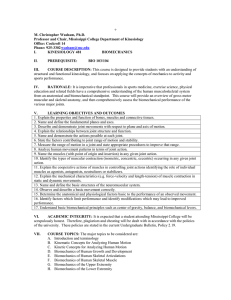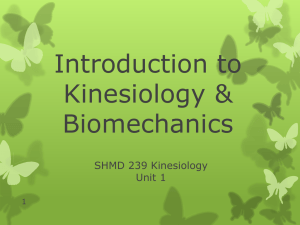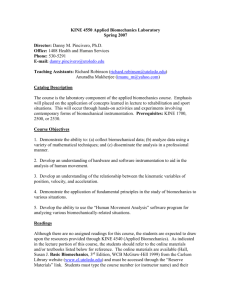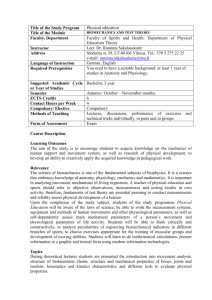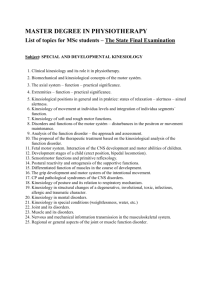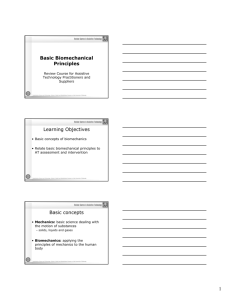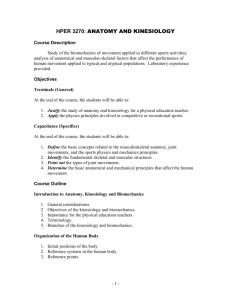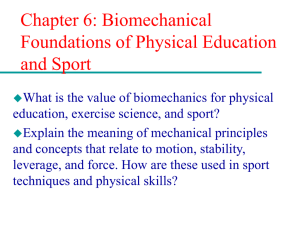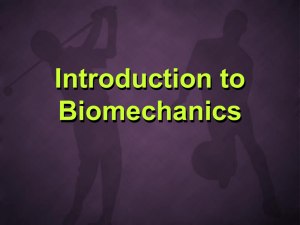Body Biomechanics
advertisement
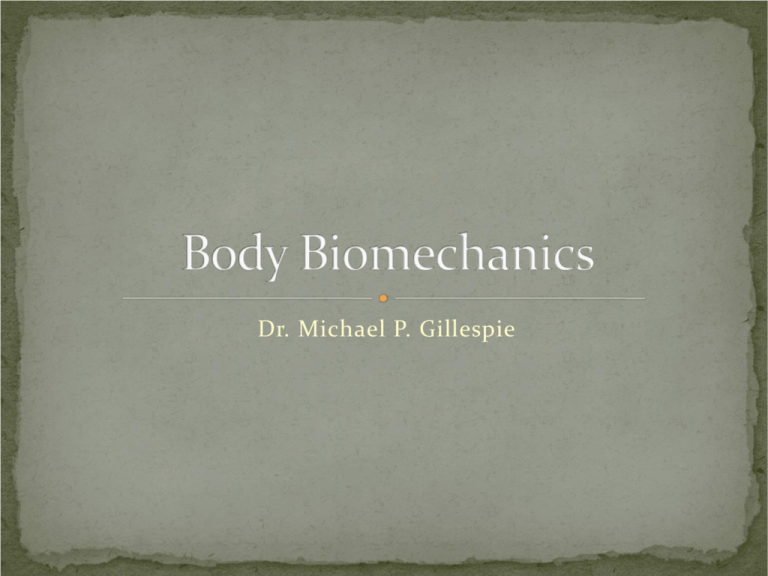
Dr. Michael P. Gillespie Kinesiology is the study of human movement. Biomechanics is an academic sub discipline of kinesiology. Biomechanics is the study of the movement of living things using the science of mechanics. Mechanics is a branch of physics that is concerned with the description of motion and how forces create motion. Forces acting upon living things can create motion, be a healthy stimulus for growth and development, or overload tissues, causing injury. Kinesiology comes from two Greek verbs that when translated literally means “the study of movement.” People need help in improving human movement and this requires knowledge of “why” and “how” the human body moves. Biomechanics Exercise Physiology Motor Development Motor Learning Pedagogy Psycho-Social In order to find the best interventions for individuals with dysfunctions in kinesiology it is best to take an interdisciplinary approach. You should incorporate knowledge from all of the sub disciplines of kinesiology. People marvel at the ability and beauty in human movement. There are many applications of biomechanics to sports and exercise. Applications of biomechanics: Improvement of performance. Reduction or treatment of injury. Human performance can be enhanced by working with the following anatomical factors: Anatomical factors. Neuromuscular skills. Physiological capacities. Psychological / cognitive abilities. Most kinesiology professionals prescribe technique changes and give instructions that allow a person to improve performance. Biomechanics is more effective in improving performance where technique is the dominant factor rather than physical structure or physiological capacities. Biomechanics allow a kinesiology professional to provide a qualitative analysis of human movement. Biomechanics research in sports lags behind innovations in the sport and experimentation by coaches. Human performance can also be enhanced by improvements in the design of equipment. New materials and new engineering designs are employed. Biomechanical studies are also utilized to design exercise and conditioning programs. Biomechanics are applied in the area of movement safety and injury prevention. The study if injury data leads to an increased understanding of the potential causes of injury. Engineers and occupational therapists use biomechanics to design work tasks and assistive equipment to prevent overuse injuries related to specific jobs. Biomechanics helps physical therapists prescribe rehabilitative exercises, assistive devices, or orthotics. Qualitative analysis is utilized to determine if an injury has sufficiently healed. This is used to determine if continued use of orthotics is necessary. It is used to determine if a player can return to the game. It is used to determine the readiness of an athlete for competition. It is utilized to assess the effectiveness of therapy. Biomechanical measurements and computer software are utilized to make accurate animations of human motion. This is utilized for technique improvement, cinema special effects, and computer games. Quantitative analysis involves the measurement of biomechanical variables and usually requires a computer to do the voluminous numerical calculations performed. Qualitative analysis is defined as the “systematic observation and introspective judgment of the quality of human movement for the purpose of providing the most appropriate intervention to improve performance” (Knudson & Morrison, 2002, p. 4). Quantitative analysis provides greater accuracy, consistency, and precision. Qualitative analysis requires fewer technical skills, calibration, and computational and processing time.

